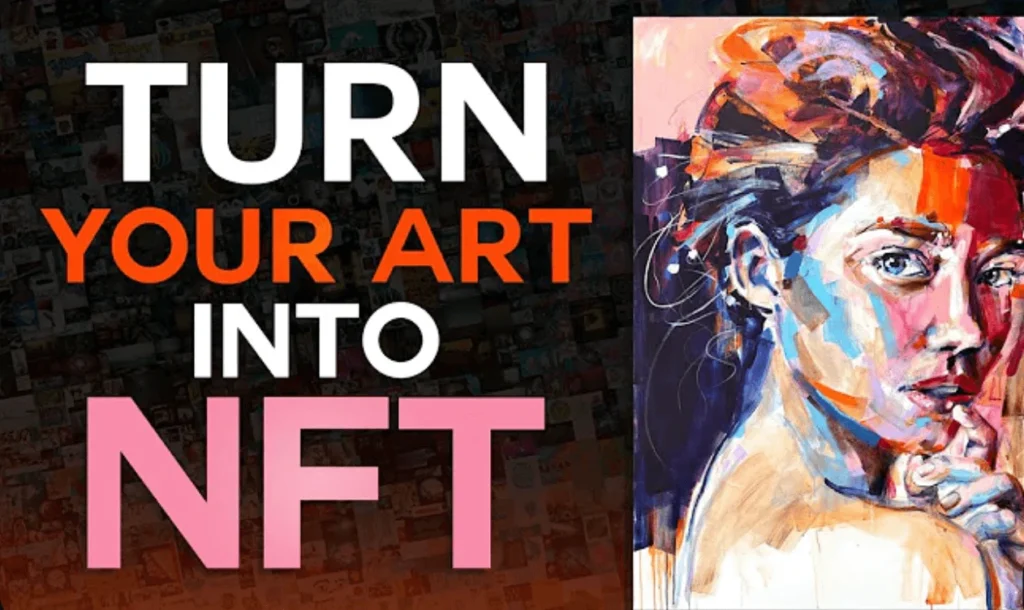In the rapidly evolving world of art and technology, the concept of turning physical art into NFTs (Non-Fungible Tokens) has gained significant attention. This revolutionary process allows artists to digitize their traditional artwork and sell it as unique digital assets on blockchain platforms. If you’re an artist intrigued by the idea of transforming your physical creations into NFTs, this guide will walk you through the process step by step.
NFTs have revolutionized the way artists create, sell, and collect digital art. These unique tokens are stored on a blockchain, providing proof of ownership and authenticity. This has opened up new avenues for artists to monetize their work in a digital format.
Contents
- 1 Understanding the Basics of NFTs
- 2 Preparing Your Physical Artwork for Digitization
- 3 Choosing the Right NFT Marketplace
- 4 Minting Your Artwork as an NFT
- 5 Setting the Right Price and Royalties
- 6 Showcasing and Marketing Your NFT Artwork
- 7 The Sale and Transfer of NFTs
- 8 Building Your Brand as a Digital Artist
- 9 The Future of NFT Art and Its Potential
Understanding the Basics of NFTs
What Are NFTs?
NFTs are cryptographic tokens that represent ownership of a unique item or piece of content. Unlike cryptocurrencies like Bitcoin or Ethereum, which are fungible and can be exchanged on a one-to-one basis, NFTs are indivisible and carry distinct attributes.
How Do NFTs Work?
NFTs operate on blockchain technology, which ensures their scarcity, security, and immutability. This technology guarantees that each NFT is one-of-a-kind and cannot be duplicated or forged.

Preparing Your Physical Artwork for Digitization
High-Quality Photography and Scanning
To create a high-quality NFT, you’ll need clear and detailed images of your physical artwork. Invest in professional photography or scanning to capture every intricate detail.
File Formats and Storage
Choosing the right file format is crucial for preserving the quality of your artwork. Formats like PNG and TIFF are preferred for their lossless compression, ensuring your NFT looks as stunning as the original.
Choosing the Right NFT Marketplace
Popular NFT Marketplaces for Artists
Several NFT marketplaces cater to artists, such as OpenSea, Rarible, and Foundation. Research each platform’s community, fees, and user interface before making a choice.
Comparing Fees and Features
Different platforms have varying fee structures and features. Some may charge minting fees, while others take a percentage of each sale. Consider these factors when selecting your marketplace.
Minting Your Artwork as an NFT
Creating a Digital Wallet
To begin minting NFTs, you’ll need a digital wallet to store your tokens. Wallets like MetaMask and Trust Wallet are widely used and user-friendly.
Uploading and Tokenizing Your Artwork
Most NFT platforms have straightforward interfaces for uploading your artwork and tokenizing it. You’ll define details like the title, description, and attributes of your NFT during this process.
Setting the Right Price and Royalties
Valuing Your Artwork
Pricing your NFT involves assessing the value of your physical artwork, your reputation as an artist, and the demand for your creations in the digital realm.
Establishing Royalty Rates
One of the benefits of NFTs is the ability to earn royalties from secondary sales. Decide on a reasonable percentage you’ll receive whenever your NFT changes hands.
Showcasing and Marketing Your NFT Artwork
Crafting Compelling Descriptions
Write captivating descriptions that provide insights into your artwork’s inspiration, creation process, and significance. This helps potential buyers connect emotionally with your NFT.
Leveraging Social Media and Online Communities
Promote your NFT artwork on social media platforms and art-focused online communities. Engage with your audience and respond to inquiries promptly.
The Sale and Transfer of NFTs
Smart Contracts and Transactions
NFT sales are executed through smart contracts, which automate the transfer of ownership upon purchase. Ensure you understand the terms of the contract before minting.
Ownership and Copyright
While ownership of the NFT is transferred, copyright of the original artwork generally remains with the artist. Make sure to clarify the terms of use for your buyers.
Building Your Brand as a Digital Artist
Consistency in Style and Themes
Maintain a consistent artistic style and thematic elements across your NFT portfolio. This helps in establishing a recognizable brand for your digital art.
Engaging with Your Audience
Interact with your audience through social media, live streams, and virtual events. Building a community around your art can enhance your success as an NFT artist.
The Future of NFT Art and Its Potential
NFTs are reshaping the art industry, offering artists new opportunities and revenue streams. As technology continues to evolve, the potential for NFT art’s growth and innovation is limitless.
Conclusion
In the ever-evolving landscape of art and technology, turning physical art into NFTs has become a game-changing avenue for artists. By understanding the steps involved in this process and leveraging the power of NFT marketplaces and social media, artists can tap into a thriving digital art ecosystem. Embrace the future, embrace NFTs.